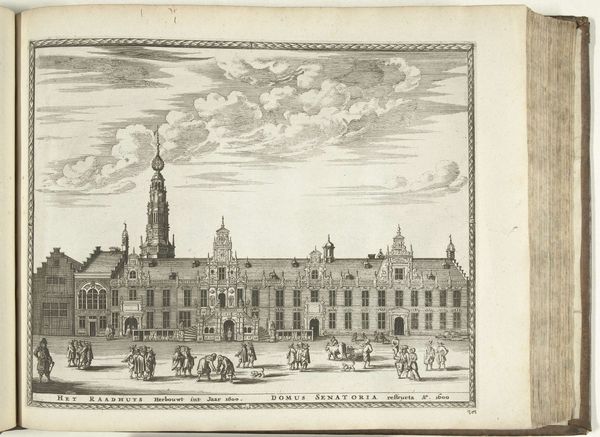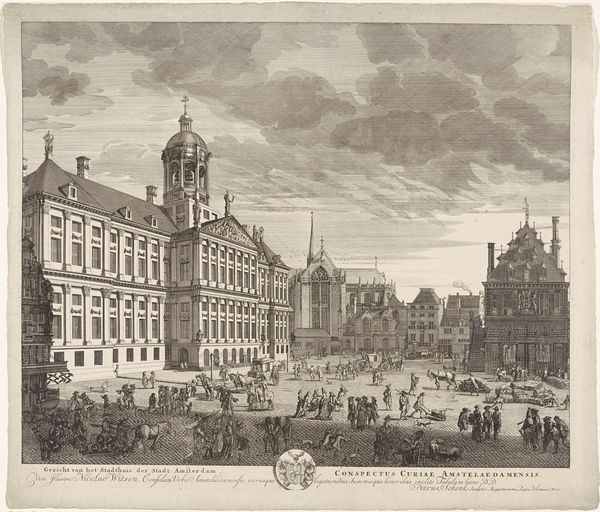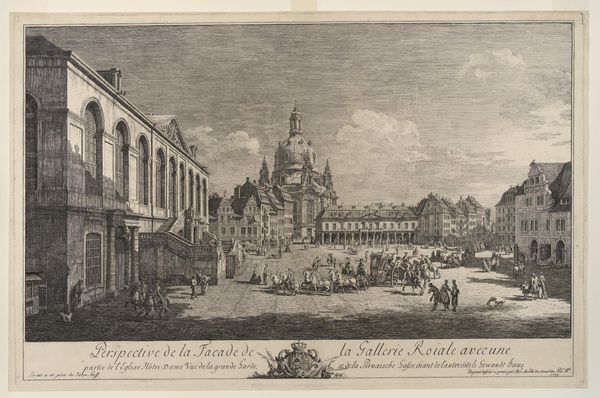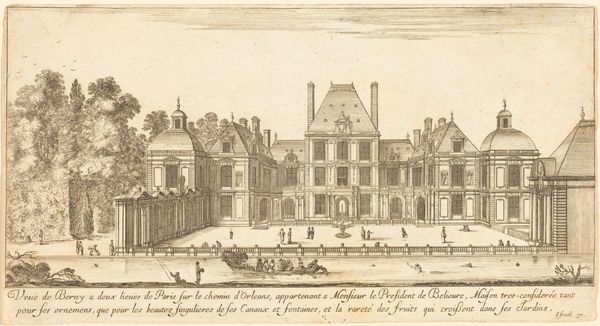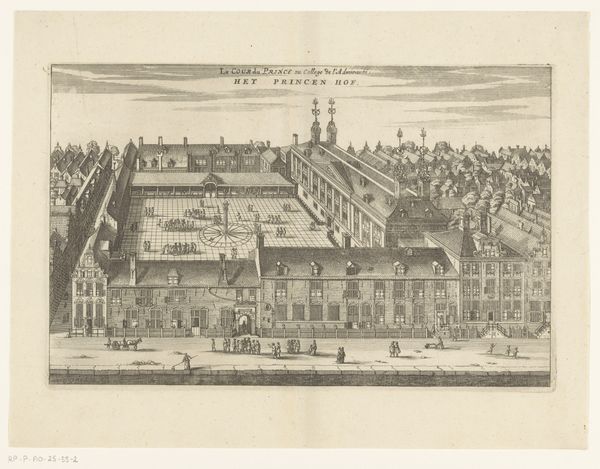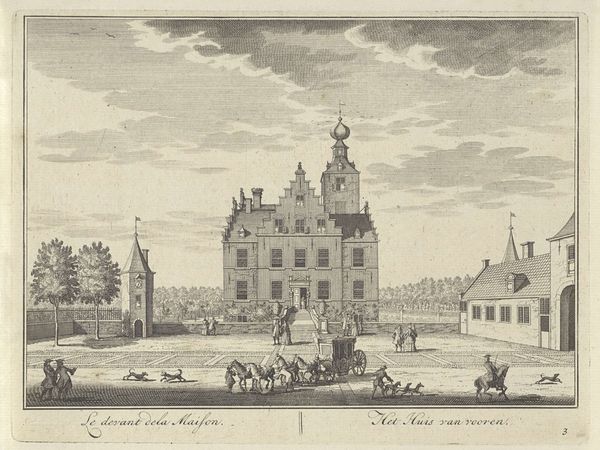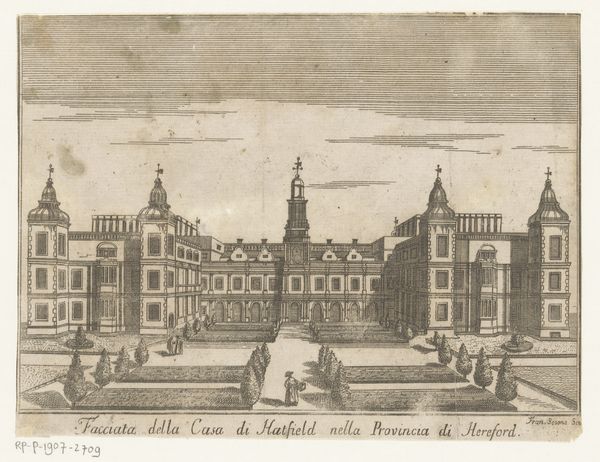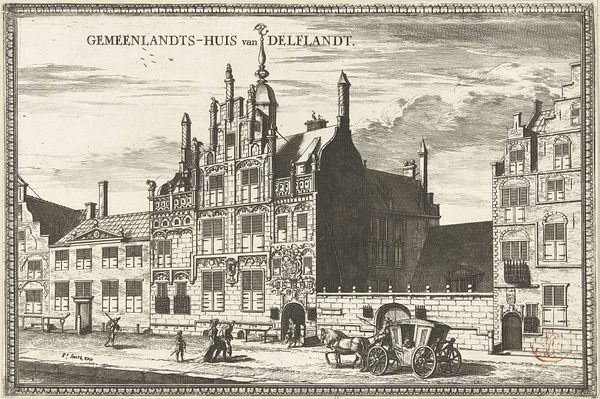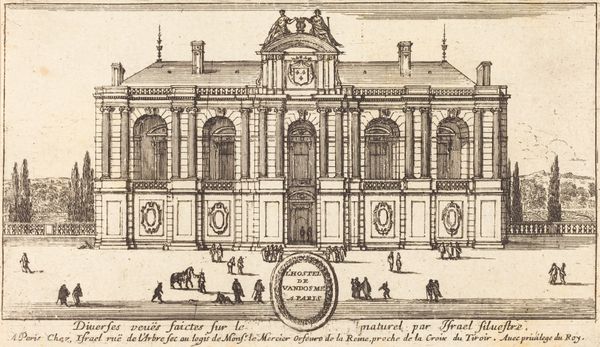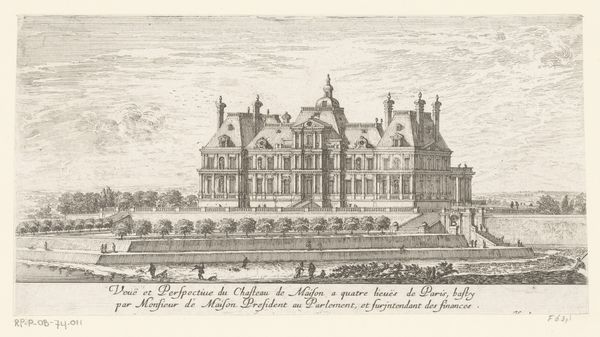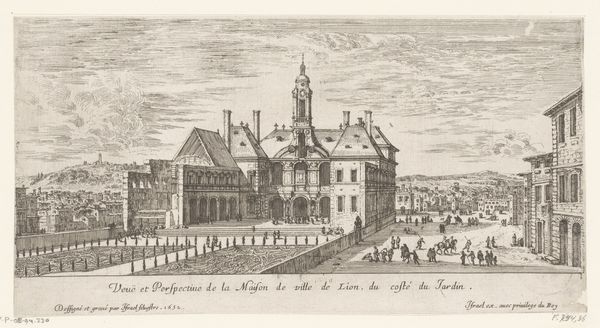
print, engraving
dutch-golden-age
landscape
perspective
line
cityscape
engraving
realism
Dimensions: height 179 mm, width 268 mm
Copyright: Rijks Museum: Open Domain
Curator: This engraving by Coenraet Decker, created sometime between 1678 and 1703, presents a meticulous rendering of the Delft City Hall, showcasing its architectural grandeur and the bustling square before it. Editor: My first impression is how active and lively the entire scene appears, but the city hall in the background looms over everything. I feel its austere image in opposition to the human-sized stories of the individuals in the plaza. Curator: Decker, working during the Dutch Golden Age, engages with broader questions around civic power. I can almost feel the weight of class distinctions encoded within the building's very design and urban placement. We might even consider the artwork a kind of early architectural manifesto. Editor: The word “Raedthuis,” inscribed atop the building, immediately resonates with cultural memory of governance and order. But if we shift our attention down to the figures—each caught in unique activities— a certain dynamism bubbles to the surface, perhaps disrupting that rigid, orthogonal impression created by the structure itself. The entire city square becomes a stage for daily drama. Curator: Right. The cityscape theme offers space to represent perspective through a hyper-realistic lens, yes, but also it begs the question: perspective for whom? Note the artist's placement of particular individuals in that social tableau, carefully calibrating what stories get to be foregrounded. Editor: Symbolically, even those fleeting clouds carry meaning. In art history, they could mean transition and temporality in a constantly changing world. Their placement seems crucial, don't you think? Curator: Yes, I think the artist tries to subtly point towards that very tension: stability versus transience; the ruling structure versus the unruly energies of the populous. And, like you noted, its inscription declares power! The image is a case study in negotiating hierarchies. Editor: It truly gives new meaning to the word, “cityscape.” Focusing on symbolic details invites the viewers to rethink relationships to the public domain, and I wonder if the people of Delft felt this artwork did any justice to the square where they lived their daily lives. Curator: By exploring the Dutch Golden Age and its focus on representing daily life, maybe we've given contemporary listeners something to reflect on, too, namely, the dynamic interactions between society, art, and politics. Editor: And seeing this engraving, I appreciate how it helps us see not just architecture and symbols, but also invites us to reimagine what urban life can embody today.
Comments
No comments
Be the first to comment and join the conversation on the ultimate creative platform.

